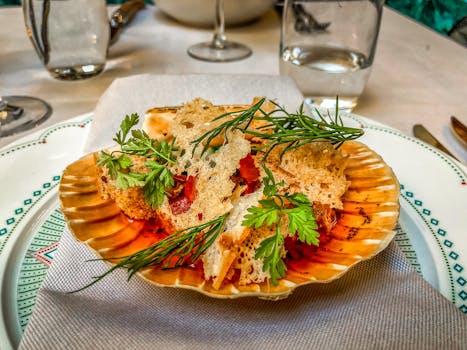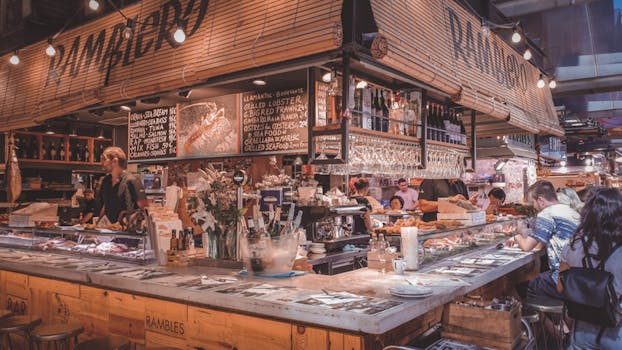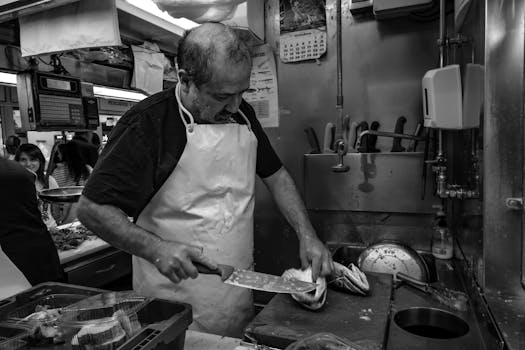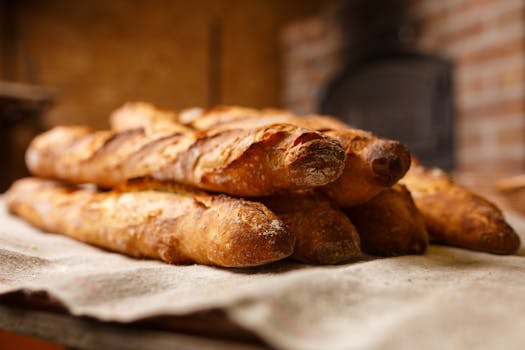
Culinary Adventures: Exploring Europe’s Food Scene in 2025
Culinary adventures await in Europe, where a diverse array of cuisines and dining experiences promise to delight even the most discerning palate. As we explore the continent’s food scene in 2025, we’ll discover the latest trends, must-visit restaurants, and traditional dishes that define Europe’s rich gastronomic heritage.
Introduction to Europe’s Food Scene

Europe’s food scene is a tapestry of flavors, textures, and aromas, woven from the threads of history, culture, and geography. From the snow-capped Alps to the sun-kissed Mediterranean, each region boasts its unique culinary identity, shaped by the availability of local ingredients, cooking techniques, and cultural traditions.
In 2025, European cuisine continues to evolve, incorporating modern twists and innovative approaches while remaining true to its heritage. As a culinary traveler, you’ll have the opportunity to sample a wide range of dishes, from hearty meat stews to delicate seafood dishes, and from rich chocolate desserts to fragrant fruit tarts.
Must-Visit Restaurants and Food Destinations

Europe is home to countless world-class restaurants, cafes, and food markets, each offering a unique dining experience. Some of the must-visit destinations include:
- Paris, France: The City of Light is renowned for its exquisite cuisine, with iconic restaurants like Le Bernardin and L’Atelier de Joël Robuchon.
- Rome, Italy: Indulge in authentic Italian cuisine at Trattoria al Moro or La Rosetta, and explore the city’s vibrant food markets, such as Campo de’ Fiori.
- Barcelona, Spain: Discover the bold flavors of Catalan cuisine at Can Culleretes or El Xampanyet, and visit La Boqueria Market for a sensory overload of fresh produce and local specialties.
- Athens, Greece: Savor traditional Greek dishes like moussaka and souvlaki at Ta Karamanlidika Tou Fani or Strofi Restaurant, and explore the historic Monastiraki Flea Market for a taste of the city’s street food scene.
These cities, along with many others, offer a culinary journey that will leave you with unforgettable memories and a deeper appreciation for the diversity of European cuisine.
Traditional Dishes and Local Ingredients

Europe’s culinary landscape is characterized by a rich variety of traditional dishes, often made with locally sourced ingredients and time-honored cooking techniques. Some of the iconic dishes and ingredients include:
- Pizza Margherita (Italy): A classic Neapolitan-style pizza topped with tomato sauce, mozzarella cheese, and fresh basil leaves.
- Coq au Vin (France): A hearty chicken dish cooked in red wine, mushrooms, and bacon, resulting in tender, flavorful meat and a rich, full-bodied sauce.
- Paella Valenciana (Spain): A savory rice dish from the Valencia region, typically made with chicken, rabbit, vegetables, and saffron-infused rice.
- Souvlaki (Greece): Juicy skewers of marinated meat (usually pork or chicken) grilled to perfection and served with a side of tangy tzatziki sauce.
These traditional dishes, along with many others, showcase the incredible diversity of European cuisine and the importance of local ingredients in shaping the continent’s gastronomic identity.
Culinary Trends and Innovations

As we look to the future of European cuisine, several trends and innovations are emerging, reflecting the continent’s ongoing culinary evolution. Some of the key developments include:
- Sustainable cuisine: With a growing focus on environmental sustainability, many European restaurants are embracing locally sourced, organic ingredients and reducing food waste.
- Plant-based cuisine: Vegetarian and vegan options are becoming increasingly popular, with innovative plant-based dishes and products gaining mainstream acceptance.
- Fusion cuisine: The blending of traditional European cuisine with international flavors and ingredients is giving rise to exciting new dishes and culinary experiences.
- Food technology: Advances in food technology, such as molecular gastronomy and food processing, are enabling chefs to create innovative, visually stunning dishes that push the boundaries of culinary art.
These trends and innovations demonstrate the dynamic nature of European cuisine, as the continent’s chefs, restaurants, and food producers continue to evolve and adapt to changing tastes, preferences, and values.




